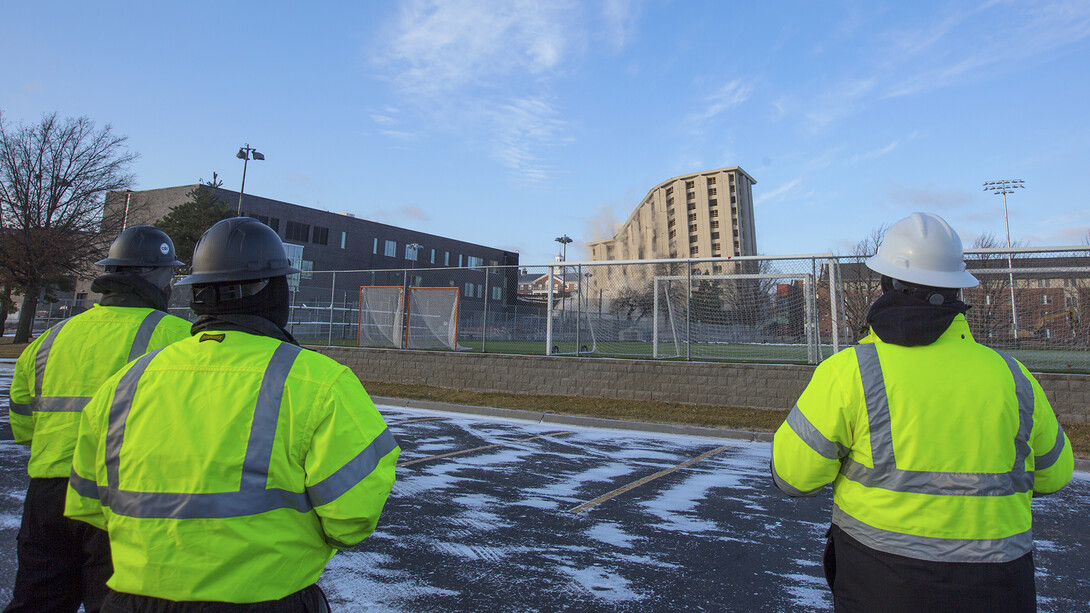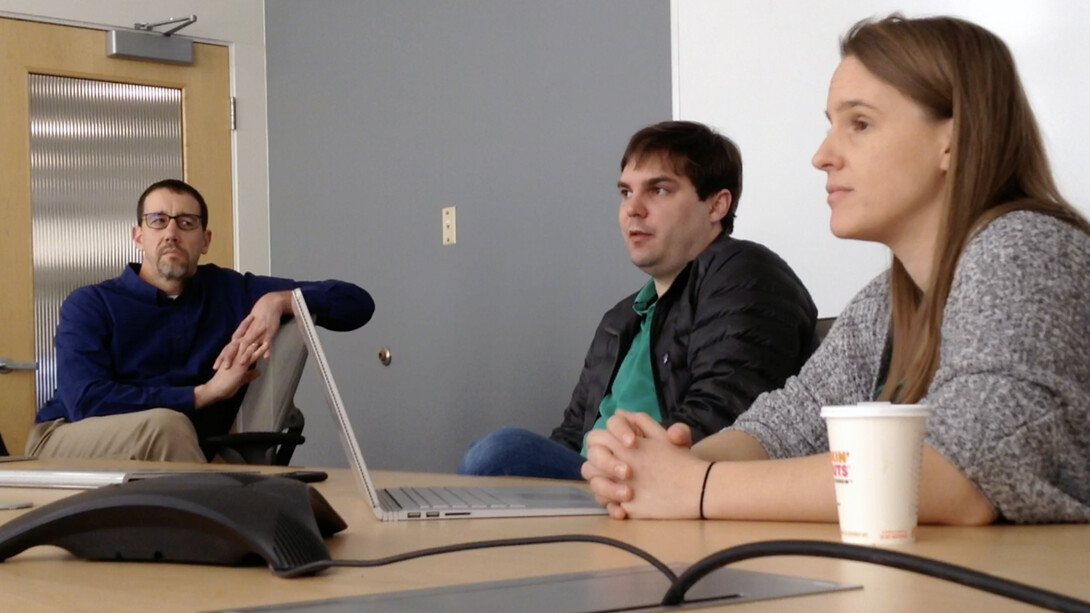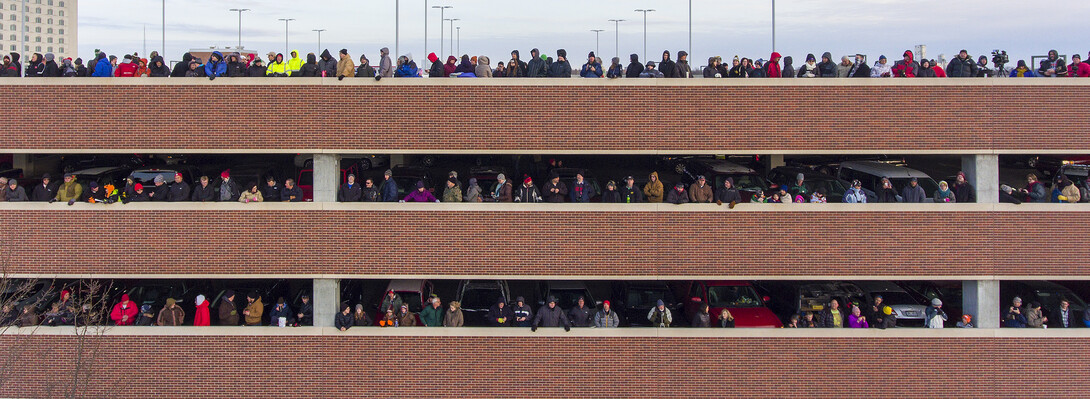
Nebraska’s razing of Cather and Pound residence halls in December 2017 was a unique experience — both to see and hear.
For a University of Nebraska–Lincoln team of civil engineering researchers that studied the demolition, a moment of silence during the blast sequence is resonating among the data collected.
Nebraska researchers Richard L. Wood and Christine E. Wittich, both assistant professors of civil engineering, and Daniel Linzell, associate dean for graduate and international programs and professor of civil engineering, are leading the study into the demolition. The data set from the actual razing includes details from sensors and accelerometers placed in and around Cather, Pound and three nearby structures, along with video and audio.
Described as a “tiny, little mountain of data” by Wood, the information is being studied to better understand how high-rise buildings and adjacent structures react to extreme loads.

In the team’s sort through the data, a less-than-two-second lull after explosive blasts and before the buildings began to fall is standing out.
“We have noticeable acceleration (vibration) spikes in the data due to the blast – all this excitation and then relative silence. About one and a half to two seconds later, the spikes come back,” said Wittich, who is studying how the blasts impacted adjacent structures and the surrounding soil. “That period of time was the loads being redistributed throughout the buildings, leading to the collapse. Now, instead of one data set, we have two — the response due to the blast loads and that due to the collapse.”
Linzell is creating mathematical models that, among many things, will help to understand and predict load redistribution. He wasn’t expecting audio data to play an important role in the research, but now recognizes it might be the linchpin that brings everything together.
“I figured we would (use some audio data), to help us understand what happened within the buildings, but possibly not. I don’t think we utilize audio clues enough with these types of studies,” Linzell said.
“How do we more directly link the frequency of the blast audio or the magnitude of that noise to what actually happens physically? As we sit here and talk, I think the audio is the one thing we could publish that would be a huge contribution to understanding the response of structures to extreme loads.”
It wouldn’t have been possible if not for state-of-the-art technology — sensors, unmanned aerial vehicles, and computer software with 3D mapping and modeling programs. Most of that technology was overseen by Wood, whose primary task was characterizing the structure for months in advance and through its collapse.
The team — which included a group of graduate students, many of whom volunteered for the project — spent three weeks placing hundreds of sensors in the towers and three nearby buildings and nearly six miles of wiring to hook it all up. There is also video footage from a fleet of drones, including the ones operated by Wood closely coordinated with other academic teams and those from other approved pilots.
Though everything seemed to go as planned with the demolition, there were still stressful moments for the research team that morning.
“It was rush-rush, push-push until the actual buildings went down,” Wood said. “The night before, I was still prepping, trying to make sure the data acquisition for Cather and Pound halls and the drones flew because they’re remote-controlled. I had a couple hours of sleep and then went rushing out the door at 5 a.m. to install the final sensors before they cordoned off the area.”
For Wittich, panic set in three minutes before the first blast.
“It was scheduled to happen at 9 a.m. and at 8:57 one of my data acquisition systems in one of the buildings had an error. I literally had to rush up until the last minute to ensure that it would record what I set it up to record.”

Now, the researchers are trying to make sense of the mountain of data that remains. Supercomputers at Nebraska’s Holland Computing Center are assisting with the process.
“The resources we have here are right up there with any of our peer or aspirational institutions, if not better,” Linzell said. “The Holland Computing Center is supporting CERN and Dave Swanson, who runs it, has been great.
“They are wanting and willing to help us expand our work and do more sophisticated models and they have shifted resources around to facilitate doing things in as optimal a fashion as possible.”
While Cather and Pound halls are gone, the research team believes their legacy — in the form of the data and ongoing research — will live on for many generations.
During the spring semester, data sets collected will be integrated into a graduate civil engineering course taught by Wittich. And graduate students advised by Wittich and Wood are integrating the project into theses.
And, the research team believes it’s possible that the razing — which drew families to watch, some tailgating reminiscent of Husker football Saturdays — inspired young viewers to learn more and consider engineering fields in the future.
“People came and brought breakfast and they were tailgating. That made it, from my perspective, cool,” Linzell said. “The fact that people who aren’t scientists discuss the event with me is heartening.”







